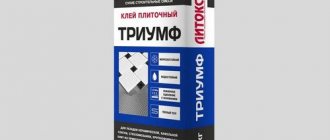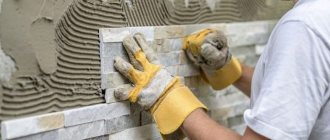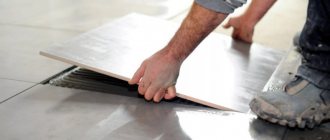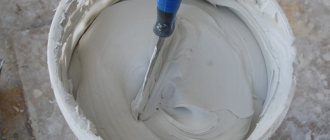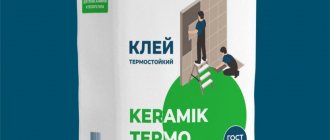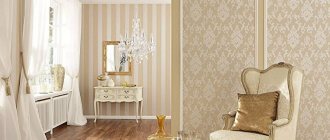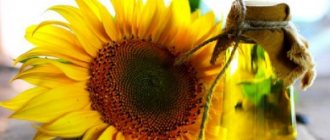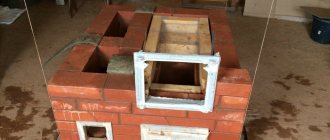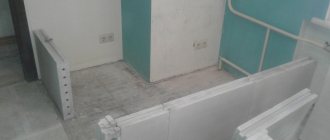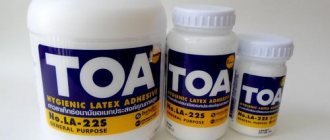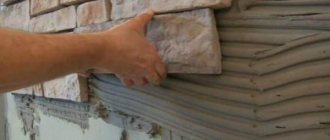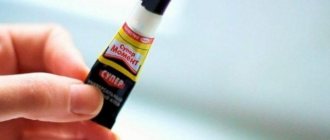The adhesive composition, invented by the chemist Petrov in the middle of the last century, still remains relevant. BF 2 glue glues plastic, metals, ceramics, fabrics, wood. Possessing powerful adhesive properties, it forms a transparent polymerized film, has a lot of advantages and is practically free of disadvantages, does not corrode, does not rot, and is resistant to water, oils, and gasoline. Such a universal adhesive, invented in the USSR in 1946, deserves close attention and detailed consideration.
Peculiarities
BF-6 glue belongs to the group of wound-healing agents with antiseptic properties. The abbreviation BF stands for phenolic butyral. The product is an alcohol solution, which is made on the basis of modified phenol-formaldehyde resin, as well as other components that are indicated in the instructions for use. In particular:
- The polyvinyl butyral in the composition has adhesive properties and acts as a plasticizer. This guarantees reliable fixation of the glue after application to the skin and eliminates the feeling of tightness.
- Rosin, which is made from the resins of coniferous trees, has anti-inflammatory and antibactericidal properties. In addition, the substance enhances the softness of the product.
- Castor oil inhibits the spread of harmful bacteria and fungi. The substance softens tissues and relieves inflammation, which accelerates the healing of damage.
The drug is presented in dark glass bottles in pharmacies. The substance has a medium-viscous consistency. When applying glue to the skin, a thin film is formed, which hardens when heated and exposed to air, while maintaining elasticity and breathability. The resulting adhesive structure holds the wound surface together and promotes healing.
BF-6 glue was developed for medical use during the war years by domestic scientists. Since 1950, the product has been widely used in the treatment of small wounds and burns, as well as for the treatment of postoperative sutures.
Glue BF 2 - what is it, where is it used
A specialized mixture of hydrocarbons is a transparent liquid of high viscosity, with a faint yellowish, brownish or reddish tint, and a characteristic pungent odor of alcohols and phenol-formaldehyde. This is a solution of resins based on ethyl alcohol. Phenol-polyvinyl acetate adhesive brand BF-2, grade I or higher - a specialized thermosetting composition. The production of the mixture is regulated by the standard, the ratio of resinous substances and butvar (polyvinyl butyral) is 1:1. The glue is part of an analogue group of substances similar in chemical composition, but differing in performance properties. The entire BF line is resistant to high humidity, water, and household chemicals. As the forming base of the glue, the RFG solvent is used, which is a mixture of alcohols: ethyl, isopropyl or isobutyl in a mass ratio of 3:1.
Beefs are valued for their fast drying time; with low consumption, it is possible to obtain a dense polymerized layer that can withstand high shear and tear loads. In comparison with other adhesive compositions, BF-2, with economical consumption, is very effective and very reliable, it forms dense, durable adhesive joints.
The BF group includes medical glue BF-6, used for fixing bandages and localizing bleeding. It acts as an antiseptic and barrier protection for the skin.
The entire BF line is resistant to high humidity, water, and household chemicals.
Composition and technical characteristics
The difference between BF-2 glue and other beefs is the low content of polyvinyl butyral (some manufacturers replace it with polyvinyl acetal). The higher the digital index of butyraphenol adhesives, the greater the concentration of polymer, which increases the viscosity of the adhesive composition, but weakens the strength characteristics. The polymerizing substance dissolves in ethyl alcohol, chloroform, and acetone. The glue demonstrates good resistance to other chemicals and is not afraid of the following:
- Acids;
- Alkalis;
- Zhirov;
- Mineral;
- Synthetic and vegetable oils;
- All kinds of petroleum products.
Thanks to good adhesion, the thick adhesive mixture is evenly distributed over the surface.
According to GOST 12708-77, BF-2 glue is a mixture of polyvinyl acetals in which resol phenol-formaldehyde resins are dissolved.
Thanks to good adhesion, the thick adhesive mixture is evenly distributed over the surface.
It is worth taking a closer look at the technical characteristics of BF-2 glue. The composition forms a seam of low elasticity; during polymerization, the glue becomes hard. The mixture is valued for a number of special properties:
- Resistance to thermal effects, you can put hot things on the glued surface, the adhesive seam can withstand heating up to +200°C without destruction;
- Like all adhesives, the shear strength is greater than the tensile strength, withstands up to 20 megapascals (200 kgf/cm²) in shear, and 20% less tensile force;
- The rigidity is indicated by the plasticity indicator, the maximum bending of the seam does not exceed 3 mm;
- The degree of drying is high, the seam is thin due to the low content of dry components (no more than 17%).
The glue is used at room temperature and heated to +100...160°C. Work carefully, the mixture is flammable and easily ignites. Gluing should be done away from sources of open flame, in a well-ventilated area, since the components are toxic, are hallucinogens, and when inhaled in large quantities cause poisoning and brain damage. It is better to store the composition at room temperature; at sub-zero temperatures, the thick mass becomes too viscous and the glue is difficult to remove from the tube. Ethyl alcohol is used as a diluent and poured in small portions. If the glue curls immediately, it means that the polymerization process has already completed. The average glue consumption is 250 g per square meter.
Masters have found through experimentation that BF works better with thermal bonding.
Ethyl alcohol is used as a diluent and poured in small portions.
Indications and contraindications
BF-6 glue is a product intended exclusively for external use. The main indication of the product is to accelerate tissue restoration in case of superficial damage to the skin. It is also used:
- For processing postoperative sutures to enhance tissue fixation in the damaged area.
- When carrying out various dental procedures, including the treatment of periodontitis.
- For treating skin after removal of moles and papillomas.
BF-6 glue is an indispensable tool in everyday life. It can be used to treat any minor bleeding skin lesions and minor burns.
The product is also used to treat the skin for:
- Acne.
- Rubbing and burst calluses.
- Cracks caused by increased dry skin on the heels and toes.
- Poorly healing chapped lips.
A contraindication to the use of BF-6 glue is individual intolerance to any component in the product. The substance should not be used to treat the skin of children under one year of age.
Compound
The composition may differ in different series. All types of BF glue are produced in accordance with GOST 12172-74.
The main component is polyvinyl butyral or polyvinyl acetate. The elasticity of the material depends on its concentration. The number next to the abbreviation “BF” means the proportion of the main component in dry form. Different series have their own number of such ingredients. As their concentration increases, the elasticity of the dried adhesive layer increases, but its strength decreases.
Additional components are resins (phenol formaldehyde, phenol polyvinyl acetate) and solvent. Ethyl alcohol, chloroform or acetone is usually added as a solvent. Only alcohol is added to products for medical purposes.
All mixtures are a solution of thick consistency. The color may vary from yellowish to brown. All compositions are non-flammable.
Negative reactions
Negative reactions occur, in most cases, with individual intolerance to the drug. Basically they are expressed:
- Allergic reactions in the form of skin rashes, which are accompanied by itching and burning.
- Local irritation on the treated areas of the skin, which is associated with redness and discomfort.
There have been no cases of overdose of the drug when used externally in practice. But at the same time, a health hazard arises if glue accidentally gets inside. This causes acute poisoning, which leads to sleep and coma. Additionally, severe hypothermia and loss of various types of sensitivity are noted. If it is confirmed that glue has gotten inside, hospitalization and emergency measures to cleanse the body are urgently required. Otherwise, there are threats of death.
Instructions for use
The glue must be used according to the instructions. The method of application will depend on the series of glue and the material from which the parts being glued are composed.
Dense materials are first sanded, cleaned of dirt, dust and degreased. If the glue is two-component, both components are mixed in the proportions indicated on the package.
Instructions for the hot gluing method
- an even layer of the mixture is applied to the materials to be glued;
- the composition dries within an hour, if BF-4 is used, for BF-2 you need to wait 10 minutes. and apply another layer;
- the processed parts are connected and pressed against each other;
- placed in an oven at elevated temperatures: for BF-4 (+150…+170 °C) for 40 minutes, for BF-2 (+130…+140 °C) for 60 minutes;
- the part is gradually cooled to ambient temperature.
When gluing fabrics, they need to be wetted with water, wrung out, and dried for an hour. Then the fabric parts are coated with glue and connected. They need to be ironed on top. You can use glued objects after at least 5 hours; the glue seam will dry for the same amount of time.
Cold way
One part needs to be smeared with the mixture and left for 20 minutes. Then apply a second layer, wait a few minutes and connect to the second surface. The part can be used no earlier than one day later.
The item must be kept in a well-ventilated area throughout the drying period.
Application of honey glue
For minor cuts and abrasions, the sequence of actions is as follows:
- use gauze or cotton wool to stop the bleeding, clean the skin around the injured area, wait until it dries a little;
- a thin film of glue is poured onto the wound surface, extending to undamaged areas;
- If the integrity of the resulting protective film is damaged, another layer of the mixture is applied on top of it.
In dental practice, the doctor first cleans the infectious foci on the tooth root, stops the bleeding at the same time, and then carefully applies glue to the tooth root. After a couple of minutes the wound dries, and after 5 minutes. The layer hardens completely, forming a thin film on the surface of the tooth that lasts for about a week.
Recommendations
In order not to cause harm, you must follow the rules for using BF-6 glue. It is important to understand that improper closure of a bleeding skin lesion will lead to infection and increase the risk of suppuration.
It is important to first clean the wound with hydrogen peroxide. It is necessary to carefully remove not only various types of contaminants, but also the remains of dried blood. Damaged tissue should be cleaned with a cotton swab, after which the skin around the wound should be wiped dry with a bandage or clean napkin. If the edges are smooth, they need to be carefully moved as close as possible.
Afterwards, the injured area and the skin around it are evenly covered with a thin layer of solution. Next, you need to wait approximately four minutes for the film to dry. It is advisable not to touch the treated area during the day. When treating large area wounds and postoperative sutures, extreme caution should be observed throughout the entire stated period of exposure to the adhesive. It is 4-5 days. Re-treatment of skin lesions is allowed if necessary.
You must also follow the rules for using the product when using it in dentistry. Recommendations for using the product in dental treatment are given in the instructions. If the drug is applied correctly, there is no need to subsequently take measures to remove the film. It dissolves on its own in 5–10 days.
When used, the components of the drug practically do not enter the systemic circulation. Therefore, glue can be used during pregnancy and lactation. In addition, interaction of the drug with other drugs is excluded. When using BF-6 glue, psychomotor reactions do not deteriorate; as a result, there are no restrictions for performing operations that require concentration and driving vehicles.
How can I replace BF 2?
There are no analogues equivalent to BF-2 on the domestic market. Foreign manufacturers use other components with comparable technical characteristics. Dried varnish is often used to glue wood; BF-2, however, holds much better. It is not advisable to change the second BF to the fourth or sixth, the more polymerizing components in the mixture, the less the strength of the seams. Medical is not used at all for ceramics and metals, only for some types of plastic.
Often, when working with ceramics, glass, wood, instead of the one-component composition BF-2, a two-component epoxy resin, “Super Cement,” is used. For working with metals, a replacement for the unique Soviet glue has not yet been invented. You can use other mixtures, the composition of which is far from beef - phenol-polyvinyl acetate glue, universal and practical.
There are no analogues equivalent to BF-2 on the domestic market.
The scope of application of BF-2 is practically unlimited. You can put a metal patch on a leaky tank, glue a broken vase or figurine. The composition is used to repair floor and wall coverings in case of broken tiles, plastic and metal parts subject to compression or bending. On glass and porcelain, the seam is almost invisible and retains its tightness and hardness during use.
Characteristics and composition
Its properties during operation depend on the composition of the glue. There are several types of it: BF 2, 4, 6, 19, 88, 2N. The abbreviation itself stands for “butyraphenol”.
The numerical value after the letters in the name of the adhesive indicates the total percentage of polyvinyl acetal. The more it is, the more elastic the adhesive seam. However, along with this, its strength after drying will be proportionally lower.
The material looks like a not very thick liquid of medium viscosity with a characteristic reddish tint. It is resistant to corrosion, fungus, oils and chemical elements. In this case, the glue sets quickly and is consumed within normal limits.
The disadvantage of BF2 is its toxicity. Manufacturers recommend working with it in a well-ventilated room. Make sure there are no active fire sources nearby.
Features of application
The use of glue is contraindicated for people who have an allergic reaction to at least one of its components. Use on deep wounds may have the opposite effect. Apply BF glue if you are sure that the damage is mild.
Important! If there are even slight traces of suppuration in the wound, then it is better to abandon the drug. The film will seal the damage and will not allow the pus to escape, which can lead to extensive inflammation.
BF-6 is a useful glue for leather. It’s worth taking it on a hike and replenishing your home first aid kit with it. In case of careless handling of household appliances or trouble in nature, the composition will come to the rescue. It will protect the skin from infection and speed up recovery.
Composition and properties
BF glue is a medical alcohol solution for external use. It contains substances such as polyvinyl butyrol, synthetic phenol-formaldehyde resin, rosin and plasticizer. It is a liquid translucent mass of a yellow-brown or reddish hue. There is a slight smell. Main functions: isolation, disinfection and wound healing.
Technical characteristics (advantages):
- easy to use;
- plastic;
- economically used;
- bactericidal;
- acts quickly;
- can be stored for a long time without deterioration;
- easily removed from the skin;
- Suitable for both adults and children (limited to age up to 1 year):
Among the disadvantages, it should be noted that the composition is flammable.
Interesting fact The idea of creating a protective glue arose on the basis of ancient recipes, when small wounds were covered with liquid resin. The substance healed the skin and no inflammation occurred underneath it. BF-6, after a series of experiments, was invented in 1955.
Applications and characteristics
Different brands of BF glue cover the needs for the use of adhesive components in completely different areas:
- Shipbuilding. Connecting parts in the construction of ships and aircraft structures made of wood.
- Industry. Fixing ferrous and non-ferrous metals to each other, fastening metals with polymer components.
- In everyday life: repair, restoration of objects made of glass, plastic, ceramics, fabric, wood. In creativity for creating plastic, wooden models, working on leather, fabric.
- In medicine: stopping bleeding, blocking wounds, fixing dental structures.
- Beauty. For fixing false nails or artificial curls.
Butyral Phenolic glue is a universal composition and has the following technical characteristics:
- A one-component material, it can polymerize both under the influence of heat and upon drying.
- Consistency: thick translucent liquid from light yellow to brown, dark brown.
- Creates elastic seams when dry.
- Resistant to UV rays, oils, gasoline, corrosion. The substance does not dissolve in water and does not rot.
- It is heat resistant up to +180˚С.
All phenolic adhesive formulations are flammable. They must not be used near open flame sources.
View this post on Instagram
Posted by Kurs Valius (@kurs_life) Apr 23, 2022 at 7:18 am PDT
Removing BF glue from surfaces
BF adhesives are easily removed from clothing or leather products using a sponge dipped in a clear alcohol-containing liquid (even vodka will do).
After the first treatment of the contaminated surface, you should wait 20 minutes, after which you should also remove residual traces of glue with a sponge.
To clean the fabric, use a cotton pad soaked in solvent. You should first test the fabric on an inconspicuous area or the reverse side for color fastness.
